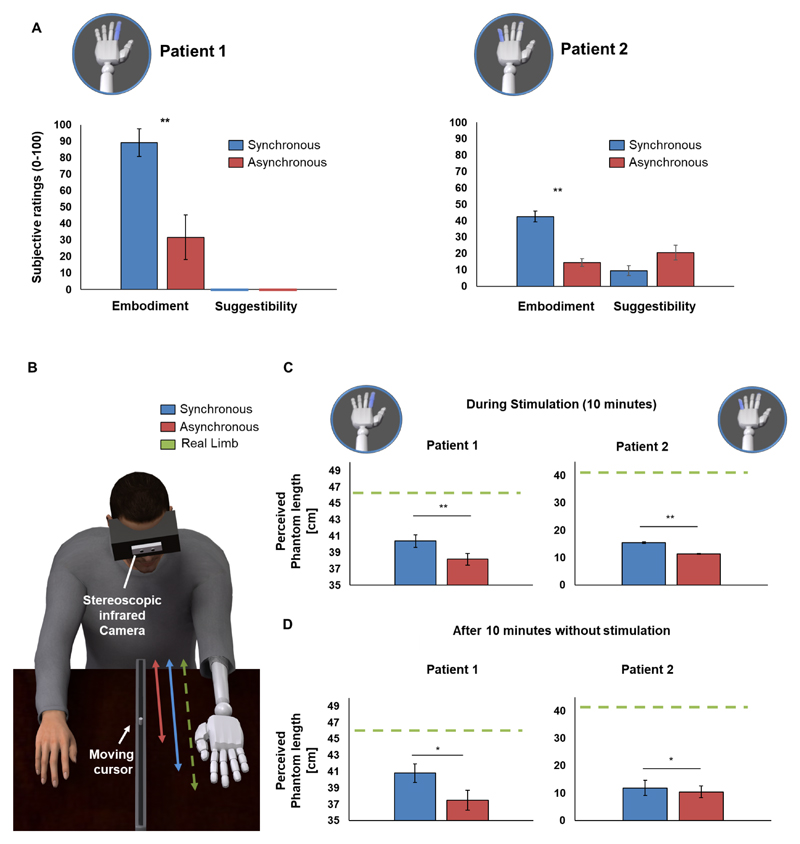Figure 1.
(A) Prosthesis embodiment. Average ratings of embodiment (Q1–3) and suggestibility items (Q4–5) are shown for all experimental conditions are shown for both patient 1 and patient 2 (see online supplementary material 1). embodiment was highest when VTNS was administered synchronously with illumination of the prosthetic hand (as compared with the asynchronous condition). the synchronous stimulation was characterised by a delay smaller than 10ms between the neurally induced tactile sensation and the visual illumination, whereas in the asynchronous condition the temporal mismatch (1.5–2.5s) between the neural stimulation and the visual illumination was randomly selected on each trial. In patient 1, suggestibility items were always rated 0 (shown as coloured lines). (B) reduction of abnormal phantom limb perceptions (telescoping). to measure the perceived length of the phantom limb, both patients were asked to operate a movable cursor inside a ruler with their right hand. the difference between the perceived position of this phantom finger and elbow was used to estimate the perceived length (in cm) of the phantom limb (average scores are reported). (C) During synchronous VTNS (blue) both perceived the tip of their phantom finger in a more distal position (vs asynchronous condition; p<0.01; red), compatible with an increase in the perceived length of their phantom limb (B; online supplementary video 2). (D) this condition-specific change in telescoping persisted, in both patients, 10min after VTNS had ended. error bars show Se of the mean. *P<0.05; **P<0.01. VTNS, visuo-tactile neural stimulation.

